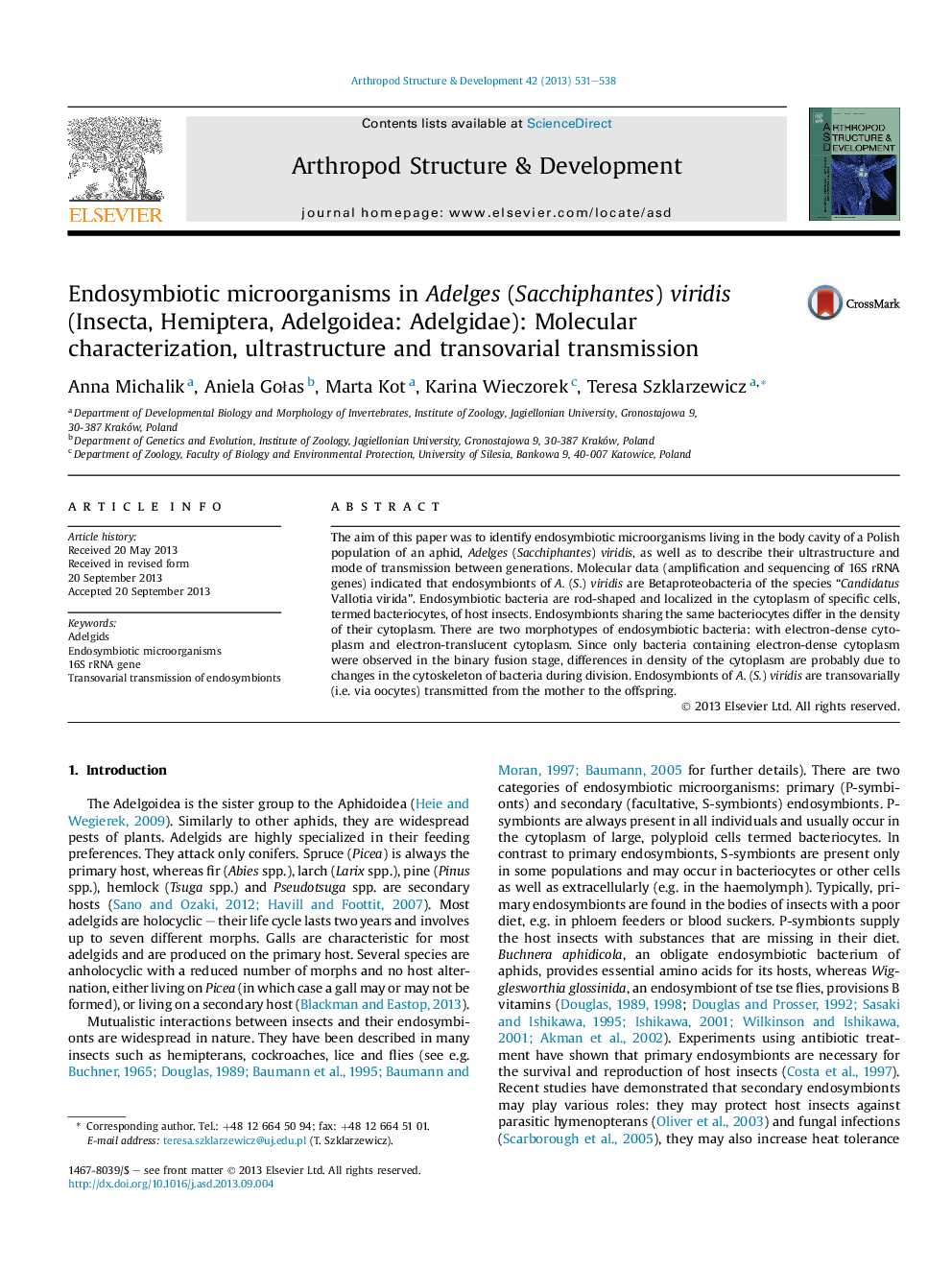| Article ID | Journal | Published Year | Pages | File Type |
|---|---|---|---|---|
| 2778553 | Arthropod Structure & Development | 2013 | 8 Pages |
•All the members of Polish population of Adelges viridis harbor endosymbionts.•The endosymbionts occur in the cytoplasm of giant cells termed bacteriocytes.•Each bacteriocyte contains two morphotypes of bacteria.•Both morphotypes belong to the species Ca. Vallottia virida (Betaproteobacteria).•The endosymbionts are transmitted transovarially between generations.
The aim of this paper was to identify endosymbiotic microorganisms living in the body cavity of a Polish population of an aphid, Adelges (Sacchiphantes) viridis, as well as to describe their ultrastructure and mode of transmission between generations. Molecular data (amplification and sequencing of 16S rRNA genes) indicated that endosymbionts of A. (S.) viridis are Betaproteobacteria of the species “Candidatus Vallotia virida”. Endosymbiotic bacteria are rod-shaped and localized in the cytoplasm of specific cells, termed bacteriocytes, of host insects. Endosymbionts sharing the same bacteriocytes differ in the density of their cytoplasm. There are two morphotypes of endosymbiotic bacteria: with electron-dense cytoplasm and electron-translucent cytoplasm. Since only bacteria containing electron-dense cytoplasm were observed in the binary fusion stage, differences in density of the cytoplasm are probably due to changes in the cytoskeleton of bacteria during division. Endosymbionts of A. (S.) viridis are transovarially (i.e. via oocytes) transmitted from the mother to the offspring.
